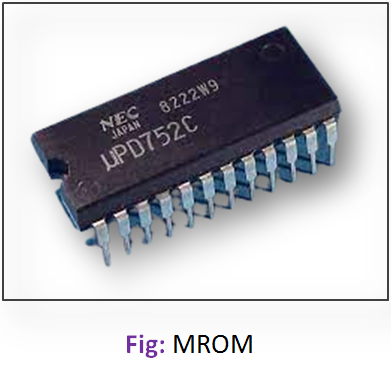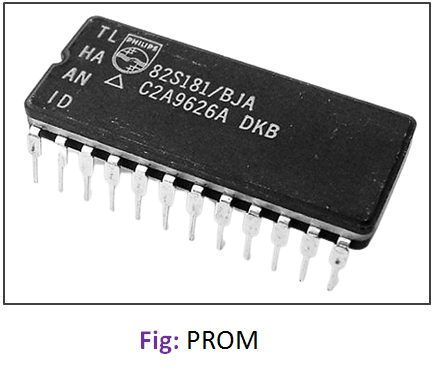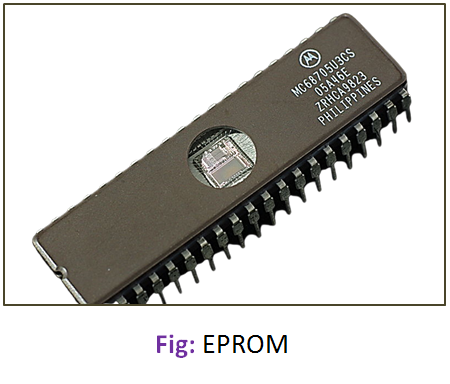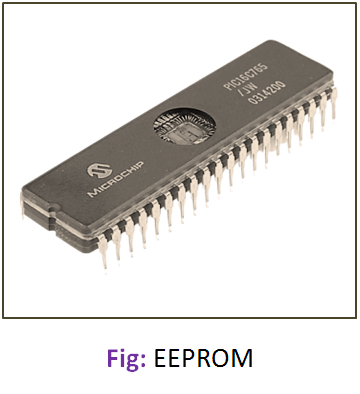Read Only Memory (ROM):
ROM is a semiconductor memory that permits only read access. The ROM functions as a memory array whose contents, once programmed, are permanently fixed and cannot be altered by the microprocessor to which the memory is interfaced. Other names for this type of memory are dead memory, fixed memory, permanent memory, and Read-Only Store (ROS).
In ROM, the memory cell (storage unit) will have a MOS transistor either with an open gate or a closed gate. Transistors with closed gates represent 1’s and the ones with open gates represent 0’s. Since the configuration is fixed, they permanently store 1’s and 0’s.
The ROM is non-volatile memory, i.e., loss of power or system malfunction does not change the contents of the memory. Also, ROM memory has the feature of random access, which means that the access time for a given memory location is the same as that for all other locations. The process of storing information in ROM is called programming.
Types of ROM:
The technique employed for storing information in the ROM provides a convenient method for classifying ROMs into one of the following four categories. They are as follows:
- MROM
- PROM
- EPROM
- EEPROM
MROM:
MROM stands for Mask Programmed Read Only Memory. MROMs are hard-wired instruments that are considered a pre-programmed set of data or instructions. These types of ROMs are very expensive. MROM contains a software mask that is burned onto the chip during the design phase of the semiconductor manufacturing process.

PROM:
It stands for Programmable Read Only Memory. PROM was first developed in the 70s by Texas Instruments. It is made as a blank memory. It is a type of read-only memory that can be amended only once by a user. A PROM programmer or PROM burner is required in order to write data onto a PROM chip. The data stored in it cannot be modified and therefore it is also known as a one-time programmable device.

EPROM:
The Read Only Memory (ROM) which has a reprogrammable feature is called EPROM (Erasable-Programmable Read Only Memory). The EPROM memory is non-volatile and also has the feature of random access. In an EPROM, the binary information is entered using electrical impulses, and the stored information is erased using ultraviolet rays. The typical erase time varies between 10 to 30 minutes.

In EPROM, the memory cell (storage location of a bit) consists of a MOS transistor with an isolated gate. The isolated gate is located between the normal control gate and the source/drain region of a MOS transistor.
EEPROM:
EEPROM stands for Electrically Erasable Read Only Memory. It is a type of non-volatile ROM that enables individual bytes of data to be erased and reprogrammed, So, it is known as a byte erasable chip. These types of ROM are also erasable like EPROM. It stores the computer system’s BIOS. Unlike EPROM, the entire chip does not have to be erased for changing some portion of it.

In EEPROM, there is no need of removing the chip from the computer. It can perform read and write cycles very slowly as compared to the read and write cycles of RAM. Here, erase and write operations are performed by byte per byte. EEPROM is usually used to store small amounts of data in computing and other electronic devices.